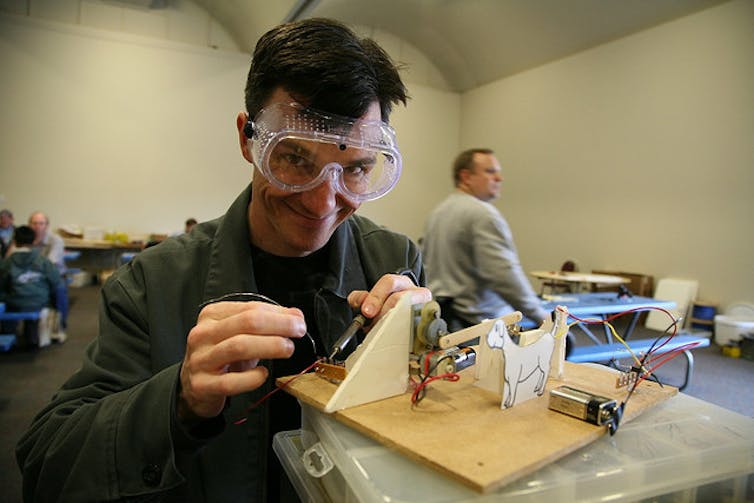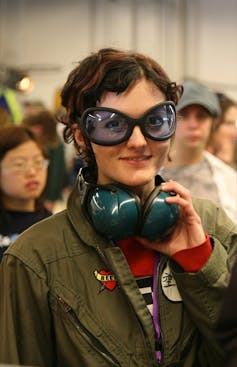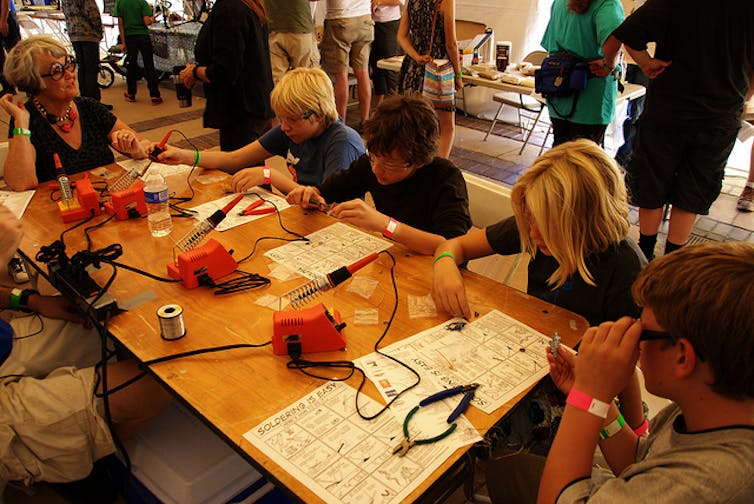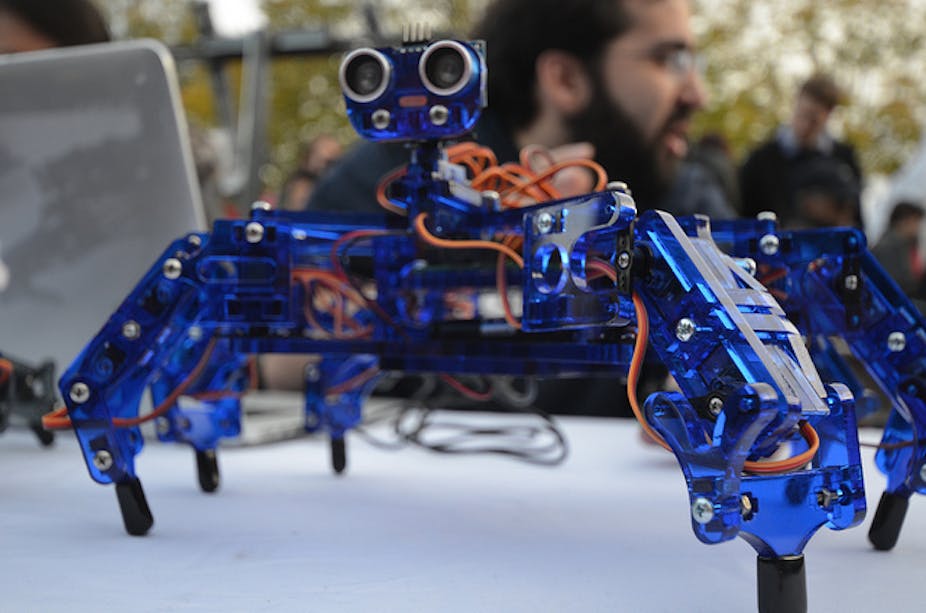One evening when I was young, my father confiscated my radio because he said I was playing it too loud (I wasn’t).
Fortunately, I had a bunch of broken down receivers in my room, so I built a new one. In hindsight, this was probably the start of my career as a Maker.
Makers see a need but rather than asking somebody else to address it, they take matters into their own hands and fix things themselves.
Rise of the Makers
The Maker movement has recently gained a lot of momentum, with Maker Faires – where these home tinkerers meet at gatherings billed as “the greatest show and tell on Earth” – popping up around the world.

Now Sydney is hosting its first Mini Maker Faire this Sunday at the Powerhouse Museum.
Yet, in many aspects, Makers have been around for a while, from amateur radio operators adjusting their rig to allow clearer communication with remote contacts to software hackers reprogramming their printer so it works the way they want it to.
Even the casual DIY-er who builds a vertical garden out of found materials is a Maker.
As it turns out, seeing a problem and fixing it yourself (rather than buying a new radio, printer or a bigger house) is often not that hard and quite rewarding.

A recent study found that people value IKEA furniture more if they built it themselves. Imagine the satisfaction one could get from such furniture without the pre-cut boards or instructions.
New tech makes it easier to Make
What recently united these tinkerers, technology enthusiasts and other life hackers under the same name is Make, a magazine published since 2005 that reports on the movement and showcases Maker projects.
However, perhaps the real reason we see more Makers these days is the increasing availability of cheap and easily hacked technology.
The advent of the various models of Arduino boards (a single-board microcontroller used in electronics) or the single board computer Raspberry Pi tremendously lowered the barrier to entry to tinkering with electronics. Communities quickly formed around these new technologies.
One no longer needs a degree in computer science to work out how to make computers do interesting things.

3D printers also have a large part to play in the shift from user to Maker.
These devices transform reels of plastic filament (or metal wire) into physical items: structural elements, cogs, or silly-looking creatures.
The cost of producing prototypes and parts is greatly reduced, and design by trial-and-error is much more affordable.
Granted, these printers are not cheap yet (they can range from A$500 to A$10,000 and beyond), but many Makers get together to share the costs. There also are some makeshift printers, cobbled from cheap elements, which can print only one thing: another, fully functional, 3D printer.
Is it art?
Not all makers are driven by a prosaic problem they need to solve. Artists are also embracing these new technologies and the possibilities they represent.
Added to the usual toolbox, these new media allow artists to extend their visions beyond traditional art forms, and create works that audiences can respond to and interact with directly.
Maybe this is leading the way towards realising Australian comedian Tim Minchin’s vision of a closer relationship between art and science.
Learning through making
All things considered, though, I think the most important aspect of the maker movement is its potential to be used for education.

When I built my backup radio, I learnt some electronics. When I started brewing beer, I understood how yeast breaks maltose into ethanol and carbon dioxide.
For the Sydney Mini Maker Faire, I built the Hammer Time Button, an alluring red button that, when pressed, prompts the MC Hammer classic U Can’t Touch This to be blasted through speakers. You know that you can’t touch this button, but you just can’t help it.
Through this project, I reacquainted myself with computer interfaces.
Now that I am getting into ham radio, I’ll finally get a chance to understand radio antennas. Whenever I need help, I know I can rely on the Maker communities around the Internet for information and advice, but most importantly, I’m having fun while learning.
Making represents a great opportunity to teach technology – not only how to use it, but also how it works – to the next generation of adults.

Makers know how to bend the world to their needs, and don’t let objects dictate their use to us. In a world increasingly reliant on technology, it is important to be able to lift the cover of everyday black boxes, and make devices behave the way we want them to (not the other way around).
The Maker communities offer a great way to learn how to do just that and may help shape the next generation of scientists, engineers and artists.

